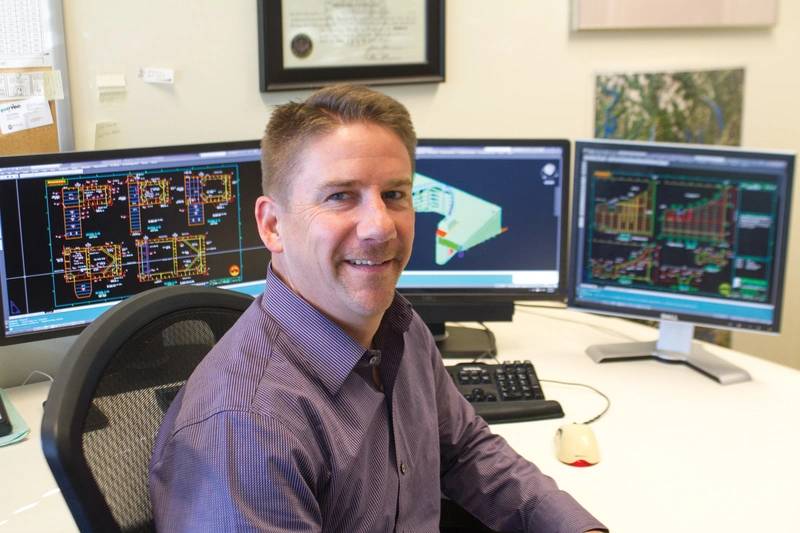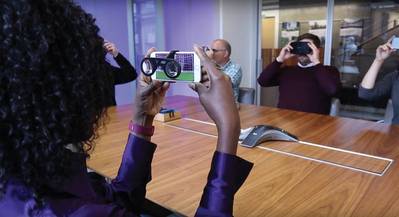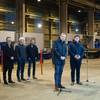Virtual Reality: Tool for Ship Design
Elliott Bay Design Group (EBDG) uses Virtual Reality as a valuable tool in ship design allowing naval architects and owners the ability to experience the space in advance of final design; a powerful asset in ship repair and refit to help a team more efficiently and cost-effectively plan and execute the project.
The process of designing and building a ship has changed dramatically in the last 20 years, with the advent and evolution of computer aided design that allows a vessel to be designed, tested and ‘built’ prior to the first actual cut of steel. Virtual Reality (VR) technology available through Elliott Bay Design Group promises to bring ship design and construction to the next level, allowing a virtual ‘walk through’ of the vessel at the design level – giving stakeholders the most immersive way to experience vessel spaces before construction – as well as functions allowing the user to pull apart the vessel, layer by layer, for a closer look inside. While VR tech offers obvious efficiencies in the initial design phase, it also has exciting applications in the redesign and conversion of existing vessels.
“EBDG started using virtual reality in 2017,” said Michael Complita, Principal in Charge, EBDG. “We are always on the lookout for new technologies that we can adapt and revolutionize the marine engineering field. VR is one of the most exciting opportunities I have seen in my career. This technology provides us with powerful, innovative ways to engage with our clients and communicate with our project teams. We have the ability to offer our clients a life-like and interactive way to experience their new vessel design or modification like never before.” VR technology is a powerful means for engineers to communicate from the field to the office, putting entire teams on the same page and providing critical information required for decision making instantly.
EBDG’s VR technology can be used via App, powered by Visual Vocal (Vv), a company which is primarily working in the architecture, engineering and construction industry. While VR itself is certainly is not a new technology, the capabilities that Visual Vocal has added make it ideally suited to modern ship design.
“There are two ways to use the software: one to visualize new designs and existing vessel modifications, and the other is to bring an entire design team into the field virtually in real time,” said Complita. “You can use models produced by any 3D modeling software to create a Vv. You can also use spherical or basic cellphone cameras on board a vessel or in the field to create a real time Vv.”
 “Virtual Reality technology provides us with powerful, innovative ways to engage with our clients and communicate with our project teams.”
“Virtual Reality technology provides us with powerful, innovative ways to engage with our clients and communicate with our project teams.”
Michael Complita, Principal in Charge, Elliott Bay Design Group (EBDG)Virtual Reality, Real Solutions
The value proposition to VR technology in maritime applications is immense, particularly as the manufacturing of vessels in the sector is traditionally one-off or short production runs, meaning that gains early on in the decision making process can deliver huge cost savings throughout the project.
“Stakeholders now have the ability to walk through every nook and cranny on their vessel from access to the piping in the bilge to the visibility out the pilot house at the earliest stages of the design process. Critical decisions and changes can be made with confidence which reduces the time and expense needed to complete the design. This also significantly reduces the risk of change orders during construction,” said Complita. This can help to save tremendous costs, as design changes increase expo-nentially as the design and construction progresses.
“During a recent vessel ship check, one onsite engineer and three “teleported” engineers conducted an engine room inspection on a passenger vessel,” said Complita.
“Visual Vocal gave remote engi-neers instant, on-demand access to every detail on the vessel for immediate input and problem-solving.”
When using VR, conceptual designs come to life and allow not only a pre-construction walk-through, but also the opportunity for owners to train crew and plan operations while the vessel is still under construction.
“During hosted meetings where Vv’s are shared, each participant has the ability to instantly add their own mark ups to the group views highlight items of interest that require discussion,” said Complita. “There is also the ability to record comments and flag them to particular points of interest on a Vv and share it with other users.”
While getting the design right from the outset has obvious benefits, VR technology can also be used throughout the build process to help solve problems that do arise. “Really, the uses are endless. We have been applying this technology in creative ways on as many jobs as possible and continue to find new applications and opportunities to help our clients,” said Complita.
“We continually update our engineers and clients to inform them what more this software can do and how best to use it.”















